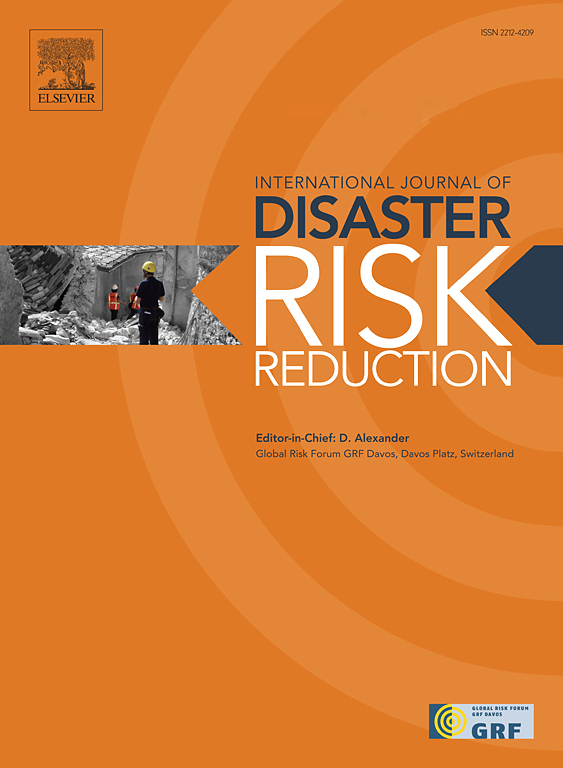Flood impacts on healthcare facilities and disaster preparedness – A systematic review
IF 4.2
1区 地球科学
Q1 GEOSCIENCES, MULTIDISCIPLINARY
International journal of disaster risk reduction
Pub Date : 2025-03-01
DOI:10.1016/j.ijdrr.2025.105340
引用次数: 0
Abstract
Hydrometeorological hazards, particularly floods and cyclones, pose significant threats to human health, including fatalities, damage to healthcare facilities (HCFs), and disruptions to health services. This study systematically reviewed scientific articles to identify the direct and indirect impacts of floods on HCFs and the risk management strategies implemented to address these challenges. To that end, we searched four databases (MEDLINE, Embase, Web of Science and Scopus) for articles written in English. Our search query included terms related to flood and cyclone hazards, HCF types and disaster risk management strategies. We followed the PRISMA guidelines to conduct the study. The search resulted in 7500 records, which were finally filtered down to 74 studies after removing duplicates, screening records and full article eligibility checks. Approximately 76 % of the included studies addressed cyclone-related flood impacts and were conducted in the United States. Hospitals were the most studied HCFs (n = 54) followed by long-term care facilities (n = 11). The main impact of floods on hospitals was due to flooded basements as they house important services including equipment, supplies and backup generators. Interruptions of electricity and water supplies were reported to cause serious challenges. Regarding flood risk management, patient evacuation was mentioned by more than 66 % of the studies while few studies reported the implementation of structural measures. More than a third of the studies reported the availability of preparedness plans. The review revealed inconsistencies in the flood preparedness of HCFs. The main policy recommendations are the availability of guidelines to standardize preparedness plans and oversight.
求助全文
约1分钟内获得全文
求助全文
来源期刊

International journal of disaster risk reduction
GEOSCIENCES, MULTIDISCIPLINARYMETEOROLOGY-METEOROLOGY & ATMOSPHERIC SCIENCES
CiteScore
8.70
自引率
18.00%
发文量
688
审稿时长
79 days
期刊介绍:
The International Journal of Disaster Risk Reduction (IJDRR) is the journal for researchers, policymakers and practitioners across diverse disciplines: earth sciences and their implications; environmental sciences; engineering; urban studies; geography; and the social sciences. IJDRR publishes fundamental and applied research, critical reviews, policy papers and case studies with a particular focus on multi-disciplinary research that aims to reduce the impact of natural, technological, social and intentional disasters. IJDRR stimulates exchange of ideas and knowledge transfer on disaster research, mitigation, adaptation, prevention and risk reduction at all geographical scales: local, national and international.
Key topics:-
-multifaceted disaster and cascading disasters
-the development of disaster risk reduction strategies and techniques
-discussion and development of effective warning and educational systems for risk management at all levels
-disasters associated with climate change
-vulnerability analysis and vulnerability trends
-emerging risks
-resilience against disasters.
The journal particularly encourages papers that approach risk from a multi-disciplinary perspective.
 求助内容:
求助内容: 应助结果提醒方式:
应助结果提醒方式:


